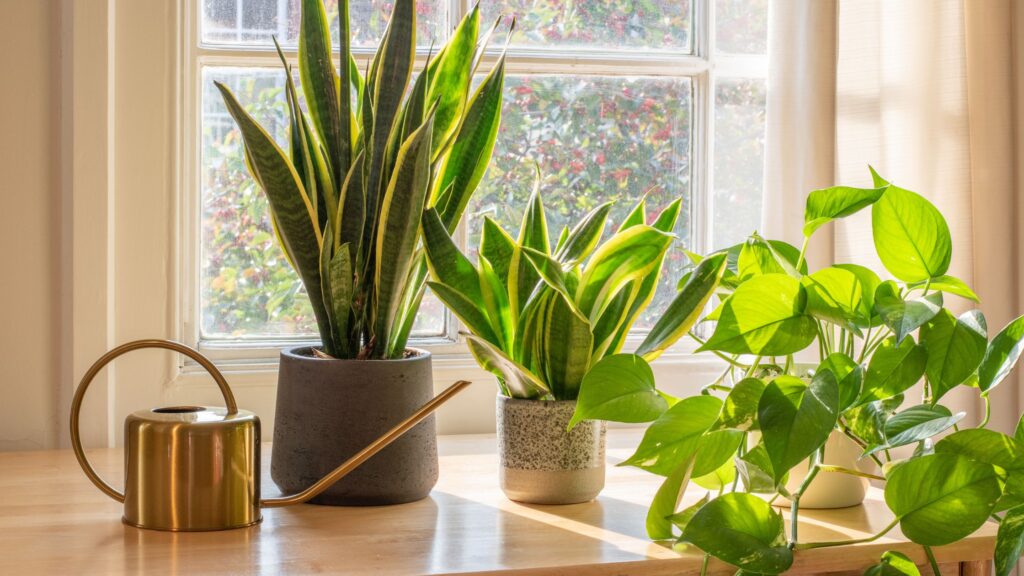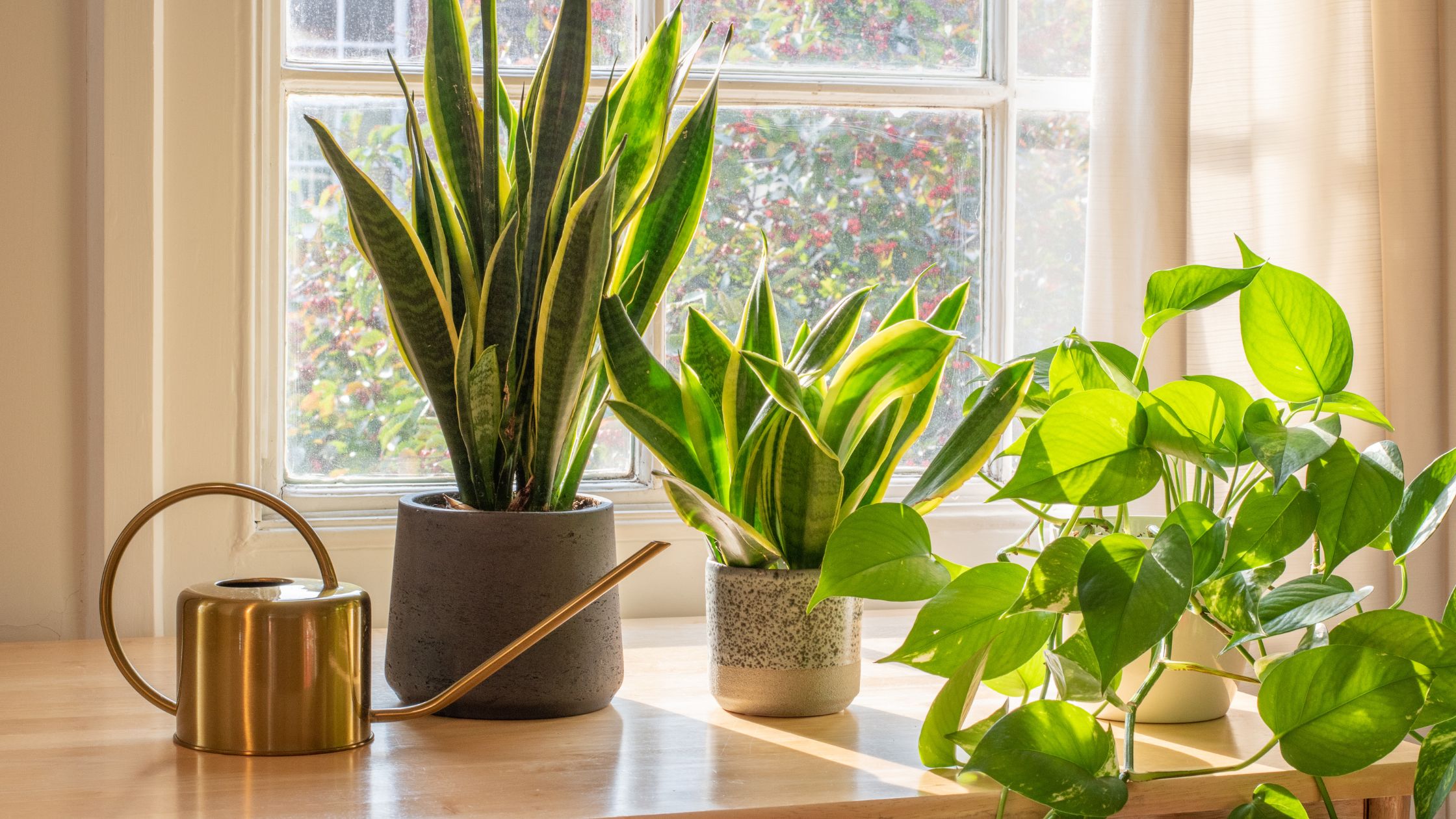FOLLOW US ON:

As we celebrate National Houseplant Appreciation Day on January 10th, let’s explore the joy of bringing nature indoors. Houseplants offer a multitude of benefits, from improving air quality and reducing stress to simply adding a touch of life and beauty to our living spaces. However, the prospect of caring for these green companions can sometimes feel daunting, especially for beginners.
This guide aims to demystify the art of houseplant care, providing you with the essential knowledge and confidence to successfully cultivate thriving indoor gardens.
Choosing the Right Plants
Before diving into the world of houseplants, it’s crucial to select species that are well-suited to your home environment.
- Consider Your Environment:
- Light: Observe the amount and type of light that enters different areas of your home. Direct sunlight streams through south-facing windows, while north-facing windows receive less intense light. East-facing windows provide morning sun, while west-facing windows offer afternoon sun.
- Space: Measure the available space for your plants. Will they be placed on shelves, windowsills, or on the floor?
- Humidity: Assess the humidity levels in your home. Bathrooms and kitchens tend to be more humid than other rooms.
- Temperature: Note the average temperature range in your home, especially during winter months.
- Beginner-Friendly Options:
- Snake Plant (Sansevieria): Known for its striking vertical foliage, the snake plant is incredibly tolerant of low light and infrequent watering.
- Pothos (Epipremnum aureum): This vining plant is a true survivor, thriving in various light conditions and readily propagating from cuttings.
- ZZ Plant (Zamioculcas zamiifolia): With its glossy, dark green leaves, the ZZ Plant is remarkably drought-tolerant and requires minimal care.
- Spider Plant (Chlorophytum comosum): This air-purifying plant produces charming “spiderettes” (baby plants) that can be easily propagated.
- Peace Lily (Spathiphyllum): Known for its elegant white blooms, the Peace Lily thrives in low-light conditions and signals its thirst by drooping its leaves.
Small wedding, big love! Discover the beauty of Micro Weddings and why they’re the perfect way to celebrate love. Read more here: Micro Weddings – A Celebration of Love & Connection
Basic Care Instructions
- Watering:
- The Importance of Proper Watering: Overwatering is a common culprit in plant demise. It’s crucial to allow the soil to dry slightly between waterings to prevent root rot.
- Determining Watering Needs: Insert your finger about an inch deep into the soil. If the soil feels dry, it’s time to water.
- Watering Techniques: Water thoroughly until excess water drains from the pot’s drainage holes.
- Light:
- Understanding Light Requirements: Research the specific light requirements of your chosen plants. Some thrive in bright, indirect light, while others prefer low-light conditions.
- Adjusting Plant Placement: Move your plants to locations that receive the appropriate amount of light.
- Utilizing Grow Lights: For plants in low-light areas, consider supplementing natural light with grow lights.
- Fertilizing:
- Importance of Fertilization: Fertilizers provide essential nutrients for healthy plant growth.
- Choosing the Right Fertilizer: Select a balanced liquid fertilizer or slow-release pellets formulated for houseplants.
- Fertilization Schedule: Fertilize during the growing season (spring and summer) at a diluted rate, following the instructions on the fertilizer package.
Overcoming Common Plant-Parenting Hurdles
Even the most seasoned plant parents encounter challenges. Here are some common issues and how to address them:
- Overwatering:
- Signs: Yellowing leaves, mushy stems, and a foul odor emanating from the soil.
- Solutions: Allow the soil to dry out completely before watering again. Consider improving drainage by repotting the plant in a pot with drainage holes and using well-draining potting mix.
- Underwatering:
- Signs: Wilting leaves, dry and crispy leaf tips, and soil that feels dry to the touch.
- Solutions: Water the plant deeply and thoroughly. Adjust your watering schedule to ensure the soil doesn’t dry out completely.
- Pests and Diseases:
- Common Pests: Mealybugs, aphids, and scale insects can infest houseplants.
- Common Diseases: Root rot and fungal infections can occur due to excessive moisture.
- Prevention and Treatment: Regularly inspect your plants for signs of pests and diseases. Isolate infected plants to prevent the spread of problems. Utilize appropriate pest control methods, such as insecticidal soap or neem oil.
- Brown Leaf Tips:
- Possible Causes: Brown leaf tips can be caused by overwatering, underwatering, low humidity, or fertilizer burn.
- Solutions: Address the underlying cause by adjusting your watering schedule, increasing humidity, or reducing the amount of fertilizer.
Conclusion
This National Houseplant Appreciation Day, let’s celebrate the joy of cultivating these green companions and the positive impact they have on our lives. By following these basic guidelines and observing your plants closely, you’ll be well on your way to developing a thriving indoor garden. Remember to start small, experiment with different plant varieties, and most importantly, enjoy the process of nurturing your green companions.
Reference Links:
- https://www.thespruce.com/gardening-4127780
- https://www.rhs.org.uk/
- https://ntrs.nasa.gov/api/citations/19930073077/downloads/19930073077.pdf
Want to watch the Super Bowl 2025 for free? 🏈🎉 Check out this complete guide on how to catch all the action without spending a dime! Read more here: How to Watch Super Bowl 2025 for Free







